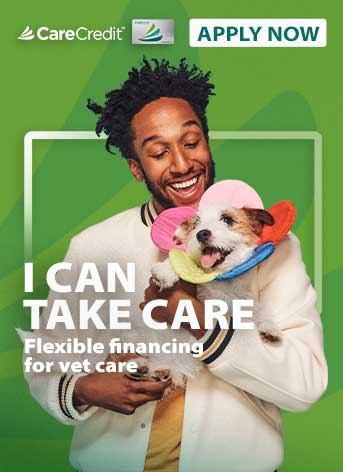What Is the Difference Between Spaying and Neutering?
Neutering is the removal of the testicles in a male dog, while spaying is the removal of the uterus or ovaries in a female dog.
At What Age Should I Spay or Neuter My Dog?
The main reason to spay or neuter your dog is to prevent unwanted pregnancies and an excessive dog population. When there are more dogs than homes available, shelters can get overcrowded. While the number has declined over the last decade, almost 400,000 dogs are euthanized in shelters each year.1
At What Age Should I Spay or Neuter My Dog?
The American Animal Hospital Association recommends spaying or neutering small breed dogs (under 45 pounds as a grown adult) at six months. For large breed dogs (over 45 pounds as a grown adult), the Association recommends the procedure after the dog has stopped growing, which is usually around nine to 15 months.2
There has been more and more research coming out of veterinary schools about delaying spaying or neutering in certain breeds — such as German Shepherds, Labradors, and Golden Retrievers — until after 12 months to reduce the incidence of certain cancers.
When Does a Female Dog Go Through Her First Heat Cycle? How Does That Affect When I Should Get Her Spayed?
Smaller dogs typically have their first season around five to six months of age. For larger dogs, it might be closer to eight to nine months of age. There are usually two to five months between each season.
Historically, dogs were spayed before their first season, but now the information has changed and many veterinarians recommend spaying female dogs between their first and second seasons. This change was also related to allowing the dog to have the hormones that come from the first spay, and reduce the incidence of mammary cancer by spaying them later.
Exactly when to get your female dog spayed would be based on the recommendation of your veterinarian, but typically veterinarians will not suggest spaying a dog within eight weeks of her season to allow the uterus and blood supply to settle down.
Is Spaying and/or Neutering Surgery Safe?
These procedures are incredibly safe. It's a surgery that most veterinarians are doing on a regular basis. As far as a procedure, the neuter procedure is pretty straightforward and the risk is fairly moderate.
The spay procedure is certainly higher risk, but it's done competently and safely in most hospitals. It's a procedure that's very well understood.
There is a risk anytime you put a dog under anesthesia, but in many veterinary hospitals, it's similar to the level of care and monitoring that you would find at a human hospital these days. Pre-anesthetic work further reduces the risk: blood work, and assessment of a heart with an ECG — or at least a consultation — are all common before a spay or neuter procedure.
There is also a small risk of post-op infection that's almost always associated with the pet not wearing their e-collar and licking the wound. Most hospitals take sterility pretty seriously, so the likelihood of contamination from surgery is low.
What Should I Expect Post-Surgery and What Is the Recovery Process Like?
Just like with human surgery, pain management and rest are the top priorities after a spay or neuter procedure. The dog should wear an e-collar to stop them from licking the surgical site and irritating the stitches. Keep the wound dry (no swimming or bathing); humans shouldn't touch the wound, either.
The tricky thing is that a lot of dogs bounce back really quickly, but you'll need to restrict your dog's activity until the first recheck in approximately three to five days. Keep an eye out for any redness, swelling or an odd smell or discharge around the surgical site.
It may feel scary, but the majority of the time, spaying or neutering is the right thing to do. Consulting with your veterinarian to get guidance on when and how to do it is the way to go.
Will Spaying or Neutering Change My Dog's Personality?
Not typically. If you have a male dog that is demonstrating a lot of behaviors like being territorial or humping, it may suppress that a bit, but that's what we want. It's not good for the dog, and it's not good for all the other pets in the community. So there may be some suppression of sexually driven behaviors. But sometimes when the neuter is performed later in the dog's life, those behaviors are more difficult to reverse and neutering might not make a difference.
CareCredit Financing For Spaying and Neutering
CareCredit knows pets are family, too. That's why we offer veterinary and pet financing to help keep your most cherished family members in top shape. The CareCredit credit card provides a convenient way to pay for your dog's Spaying and Neutering and other health and wellness expenses, including exams, medications, and products at providers in the CareCredit network.** Apply today and continue your wellness journey by downloading the CareCredit Mobile App. You can find a provider on the go, manage your CareCredit account, and easily access the Well U hub for more great articles, podcasts, and videos. Use our Acceptance Locator to find a veterinarian that accepts CareCredit to help keep your pet healthy and happy for a lifetime of love.
Meet The Experts
Dr. Andrew Moffatt
Dr. Moffatt is from Melbourne, Australia, and is the founder and CEO of VetnCare, Inc, a growing group of veterinary hospitals in the San Francisco Bay Area. In 2017, Dr. Moffatt was awarded the California Veterinary Medical Association's "RVT's Outstanding DVM of the Year." He is an active member of the CVMA's PAC (Political Action Committee) and the Certified Veterinary Assistant Committee. He is also a past Vice President and Board Member of the Alameda County Veterinary Medical Association. Dr. Moffatt is an Expert Witness for the Veterinary Medical Board, providing consultation to the board as part of disciplinary investigations. He speaks at numerous AVMA-accredited schools around the world, and in his spare time, Dr. Moffatt enjoys traveling, fly-fishing, cycling, and diving.
Author Bio
Abbie Mood is a freelance writer with more than 10 years of experience. She has worked with clients of all sizes to create compelling content and she has written for the American Kennel Club, Marriott Bonvoy, Women's Health Online, Headspace, and more.










